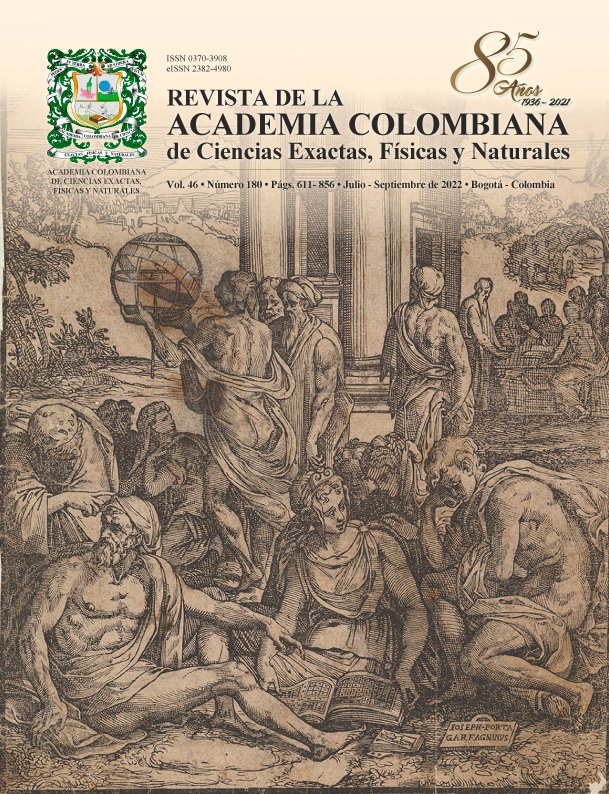Resumen
En los años 60, la NASA pidió a James Lovelock, inventor del detector de captura de electrones, que desarrollara instrumentos para detectar vida en Marte. Al considerar cómo se manifestaría la vida, se dio cuenta de que la atmósfera de la Tierra estaba a órdenes de magnitud del equilibrio químico y que ese desequilibrio no podía deberse puramente a procesos abiológicos, sino que era mantenido en un estado dinámicamente estable por efecto de la vida en el planeta. En aquella época, el análisis espectrométrico de la atmósfera de Marte indicaba que estaba cerca del equilibrio químico y Lovelock concluyó que era poco probable que Marte albergara vida. Dado que la Tierra había tenido organismos biológicos durante al menos 3,2 mil millones de años, Lovelock llegó a la conclusión de que la vida era responsable de la homeostasis planetaria en el sentido de mantener las condiciones óptimas de la superficie, de ahí su Hipótesis Gaia.
Referencias
Boyce, C.K., Lee, J.E., Field, T.S., Bodribb, T.J., Zwieniecki, M.A. (2010). Angiosperms helped put the rain in the rainforests: the impact of plant physiological evolution on tropical biodiversity. Annals of the Missouri Botanical Garden, 97(4), 527-540. Doi: 10.3417/2009143
Bunyard, P.P., Goldsmith E. (1988). Gaia: The Thesis, the Mechanisms and the Implications. The Proceedings. Wadebridge Ecological Centre Conference.
Bunyard, P.P., Hodnett, M., Peña, C., Burgos-Salcedo, J.D. (2019). Further experimental evidence that condensation is a major cause of airflow. DYNA, 86(209), 56-63. http://doi.org/10.15446/dyna.v86n209.73288
Bunyard, P.P. (2014). How the Biotic Pump links the Hydrological Cycle and the Rainforest to Climate. Is it for Real? How can we prove it? Bogotá, Universidad Sergio Arboleda, Instituto de Estudios y Servicios Ambientales – IDEASA. ISBN: 978-958-8745-88-6. http://hdl.handle.net/11232/397
Charlson, R.J., Lovelock, J.E., Andreae, M O., Warren, S.G. (1987). Oceanic phytoplankton, atmospheric sulphur, cloud albedo and climate. Nature, 326 (6114): 655-661. doi: 10.1038/326655a0
Hitchcock, D.R., Lovelock, J.E. (1967). Life detection by atmospheric analysis. Icarus, Volume 7, Issues 1-3, pp. 149-159.
Lovelock, J.E. 1972. Gaia seen through the atmosphere. Atmospheric Environment 6, 579-580.
Lovelock, J.E. ([1979] 2000). Gaia: A New Look at Life on Earth (3rd ed.). Oxford University Press. ISBN 0-19-286218-9.
Lovelock, J.E. (2007). The Revenge of Gaia: Why the Earth is Fighting Back and How We Can Still Save Humanity. Penguin Books.
Lovelock, J.E., Giffen, C.E. (1969). Planetary atmospheres: compositional and other changes associated with the presence of life, advanced space experiments (Ed. 0. L. Tiffany and E. Zaiteff) pp. 179-193. American Astronautical Soc., Washington, D.C.
Lovelock, J.E., Margulis, L. (1974). Atmospheric homeostasis by and for the biosphere: the Gaia Hypothesis. Tellus, 26(1-2), 2-10, DOI: 10.3402/tellusa.v26i1-2.9731
Makarieva, A.M., Gorshkov, V.G. (2007). Biotic pump of atmospheric moisture as driver of the hydrological cycle on land. Hydrology and Earth System Sciences, 11, 1013-1033. doi: 10.5194/hess-11, 2007
Makarieva, A.M., Gorshkov, V.G., Sheil, D. Nobre, A.D., Li, B.L. (2013). Where do winds come from? A new theory on how water vapor condensation influences atmospheric pressure and dynamics. Atmospheric Chemistry and Physics, 13, 1039-1056. doi: 10.5194/acp-13- 1039-2013
Makarieva, A.M., Gorshkov, V.G., Sheil, D. Nobre, A.D., Bunyard, P.P., Li, B.L. (2014). Why does Air Passage over Forest yield more Rain? Examining the Coupling between Rainfall, Pressure and Atmospheric Moisture Content. Journal of Hydrometeorology, 15(1), 411-426. Doi: 10.1175/JHM-D-12-0190.1
Margulis, L., Guerrero, R., Bunyard, P.P. (1996). We are all Symbionts. Chapter 12. Gaia in Action: Science of the Living Earth. (ed. Bunyard, P. P.) Floris Books.
Molina, M., Rowland, S. (1974). Stratospheric sink for chlorofluorocarbons: chlorine atomcatalysed destruction of ozone. Nature, 249 (5460), 810-812.
Salati, E. (1987). The forest and the hydrological cycle. In R. Dickinson, Geophysiology of Amazonia. pp. 273-296. New York: Wiley and Sons.
Watson, A.J. (1996). The Gaia hypothesis: Mechanism and Tests. Chapter 4. Gaia in Action: Science of the Living Earth. (ed. Bunyard, P. P.) Floris Books.

Esta obra está bajo una licencia internacional Creative Commons Atribución-NoComercial-SinDerivadas 4.0.
Derechos de autor 2022 Revista de la Academia Colombiana de Ciencias Exactas, Físicas y Naturales

